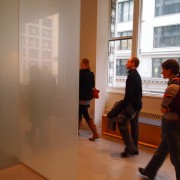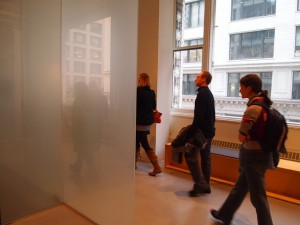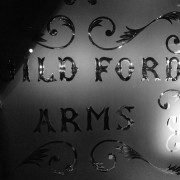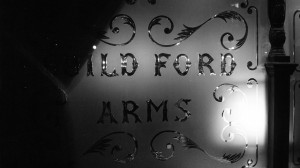Need frosted glass? Make your own!
The same effect can be achieved with a chemical etching process. As with sandblasting, the surface of the glass is modified, leaving behind non-transparent glass. In either case, true frosted glass can run anywhere between $3 and $30 per square foot. There’s no doubt that it’s useful, but it can also be expensive.
An alternative to frosted glass is glass paint. Glassprimer™ glass paint is specially formulated to bond permanently with the surface of the glass. Once Glassprimer™ glass paint is cured, the paint will not delaminate, fade or chip. A special frosted effect can deliver the look and benefits of frosted glass for about $1 per square foot. And unlike frosted glass, Glassprimer™ glass paint can be tinted to match virtually any color from any major paint manufacturer. That means you can easily incorporate glass paint into your decorating scheme.
Glassprimer™ glass paint is an excellent solution for concealing an unattractive view. That can certainly happen, especially in densely constructed urban areas. Painted glass can provide privacy, and offers a durable solution that will not fade, even in direct sunlight.
Glassprimer™ glass paint is a specialized glass coating that bonds permanently to glass surfaces. GlassPrimer also makes a glass surface molecular activator that is designed to work with UV-inkjet glass printing processes. Glassprimer™ glass paint can be used in both interior and exterior applications and can help reduce solar heat gain in some applications. For more information about Glassprimer™ glass paint, please visit the rest of our site. If you’d like to purchase Glassprimer™ glass paint, please visit our online store .
Photo Credit: Jaysin Trevino , via Flickr.com




